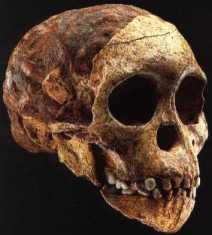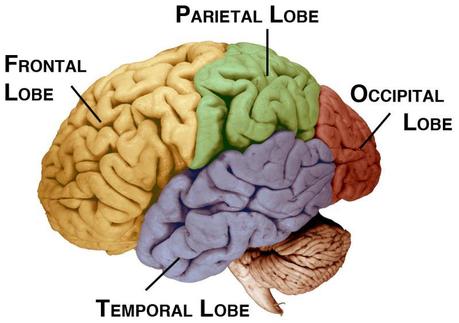
Taung, the first Australopithecus discovered, had an endocast.
Endocasts are moulds of brains created from the imprints on the inside of the skull; allowing us to see what the brains of long extinct species looked like. They’re an invaluable resource when studying human evolution, allowing us to track how our brain has evolved over the past few million years. But few people have looked at endocasts of more modern individuals. After all, by that point we’re fully human. Why rely on an endocast when you can go look at a real brain? So a team of Chinese researchers decided to plug this gap in our knowledge by looking at over 500 endocasts from the past 7,000 years. Their results revealed something surprising: our brains are shrinking1!
Actually, it’s not that surprising. There’s a growing body of evidence that our brains have been decreasing in size over the past 10,000 years2; with some even suggesting this trend began as far back as 35,000 years ago3! Over the past 7 million years of human evolution our brain has done one thing: get bigger. It’s tripled in size4, so this sudden change of direction is fascinating, but nobody really knows why it began. That’s where these endocasts come in. They allow us to see not just the size but the shape of the brain. These researchers can look and spot what exactly is shrinking, perhaps shedding light on why.
Except that the team didn’t find that any one area of the brain was shrinking. It’s not the cast that we’ve just stopped using one part of our brain so that’s disappearing. The whole brain has been shrinking; and changing shape too, becoming more circular over time. The one exception is the frontal lobe, which actually seems to be increasing in size. The frontal lobe is the region of the brain responsible for speaking and comprehending the speech of others. It also seems to be linked to reading and writing, which you’d expect1.

The frontal lobe is, as you might expect, at the front of the brain
The 7,000 years or so these endocasts cover is also the period writing was invented and spread around the world; until many countries have almost universal literacy rates. In other words, as reading and writing becomes more important the region of the brain needed for it becomes larger, despite the fact the rest of the brain is shrinking. It’s a “no duh” question; but could there be a link? The researchers think so1, but it is worth noting the frontal lobe is also linked to planning and memory.
The team also found that there had been an increase in the differences between the sexes (sexual dimorphism) over this time. In the earliest skulls they examined there was only ~150 ml difference between males and females. In present day populations this shot up to almost 200 ml1. This is particularly interesting given the course sexual dimorphism of the body has taken over human evolution. In our early ancestors it was massive, with men being much taller than women. Over time it decreased; but not seems to be increasing again5. In other words it’s followed the same sort of path as brain size, reversing course quite recently.
But nobody cares about that, they want to know why our noggin is shrinking! Sadly this paper does’t have an answer for us, revealing that there doesn’t appear to be any part of the brain taking the brunt of the shrinkage. But the story of recent brain evolution is a complex one, and our frontal lobe is – surprisingly – increasing. Perhaps as a consequence of the growing importance of reading.
Clearly txt spk has doomed humanity.
References
- Liu, C., Tang, Y., Ge, H., Wang, F., Sun, H., Meng, H., … & Liu, S. (2014). Increasing breadth of the frontal lobe but decreasing height of the human brain between two Chinese samples from a Neolithic site and from living humans.American journal of physical anthropology.
- Henneberg M. 1988. Decrease of human skull size in the Holocene. Human Biol 60:395–405.
- Ruff CB, Trinkaus E, Holliday TW. 1997. Body mass and encephalization in Pleistocene Homo. Nature 387:173–176.
- Boyd and Silk, 2012. How Humans Evolved
- Wolfe LD, Gray JP. 1982. Subsistence practices and human sexual dimorphism of stature. J Hum Evol 11:575–580.

